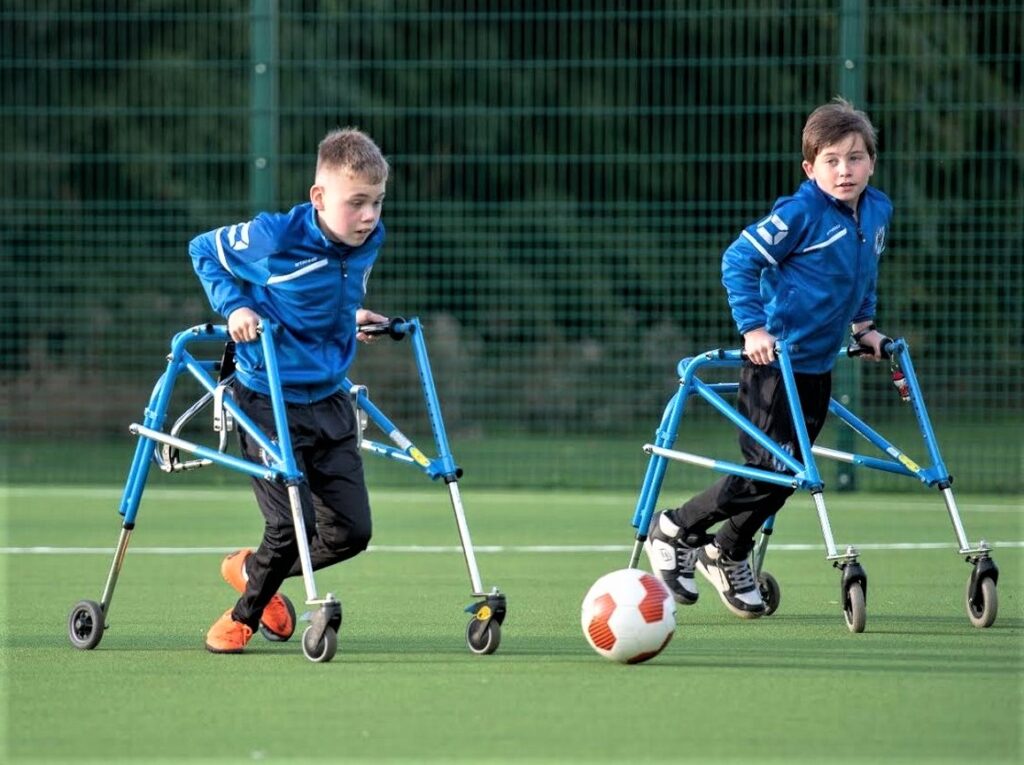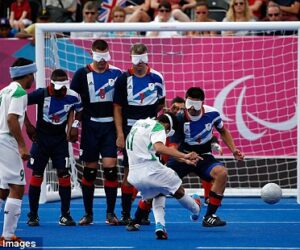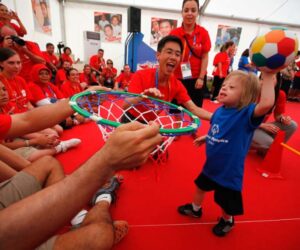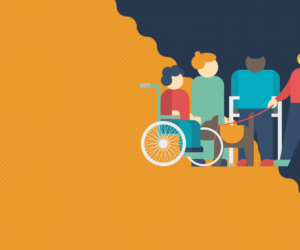As a new format of the game for those athletes who require walking/gait training equipment, Frame Football has been designed, developed, and trialed with considerable positive feedback from coaches, equipment specialists, physiotherapists, parents, and, most importantly, players.
Piloted in England in 2014, the sport has now spread to countries worldwide as a participation program with hopes that it will one day become an internationally competitive sport. IFCPF is working in partnership with CPISRA to explore further and develop this new football format to give athletes with high support a platform to participate and compete on a level playing field through a game that caters explicitly to their abilities. As a format of football, programs established so far have found the right balance of gender representation.
What is Frame Football?
Frame football is an adapted football form, where children who use a walker/walking frame can also enjoy the football game. In Frame Football, fun and exercise are central.
Frame football can be played on grass, but sometimes it is more convenient to opt for a paved surface such as a sports hall, handball court, or a (hockey) artificial turf so that the children can move as smoothly as possible.
Classification

This format is in its infancy; therefore, a formal classification system has not yet been established.
Rule Adaptions
• Small sided with a maximum of 5-a-side played Smaller pitch and goalposts
• Played on a stable, smooth level surface – tarmac and concrete should be avoided
• Two on one rule replaces offside – if two teammates and an opponent are within 3m of the ball while it is in play, an indirect free kick is awarded to the opposition. The only exception is that a goalkeeper can commit a two on one
• Frame contact with the ball is permitted; however, use of feet is encouraged at all times
• Roll ins replace throw-ins
• No offsides
A few tips to know
Beginning frame football with warming-up!
- Jogging gently, trying to stand tall with knees apart when running, and starting slowly and then a bit faster gradually is the best way for warming-up.
- Hip abduction walk is another way to warm-up which means walk with the frame every three steps to circle knee out towards the frame’s side.
Balance exercises are necessary!
Some balance exercises help the player to improve the balance disorders, such as:
- High Five: The player stands tall with heels down and knees as straight as possible, facing the partner, using the opposite hands, which helps to improve the standing ability and increasing the player’s balance.
- Single leg balance: standing in the frame and holding it with hands, lifting one foot while the other foot is on the ground with knees straight and standing tall, and switching the legs helps strengthen the legs and improve the balance. This can be harder but more useful while the player tries to hold the frame with one hand.
- Standing practice: standing in the frame with two legs on the ground, trying to through the ball with one hand or two if the player can, is an excellent practice for managing the balance.
Ball exercises increase the skill!
Here are some practices with the ball to improve the frame football skills:
- Holding the frame, placing one foot on the ball, rolling the ball forwards and backward repeatedly, and then switching the legs.
- Having the frame, putting one foot on the ball, moving the ball side to side repeatedly, and then shifting the legs.
- Holding the frame, placing the foot flat on the ball, rolling it forwards until the heels are still on the ball and toes pointing to the ceiling for a few seconds, and then roll the ball back.
Exercising regularly and in principle is a necessity for the player’s health and becoming a professional athlete.
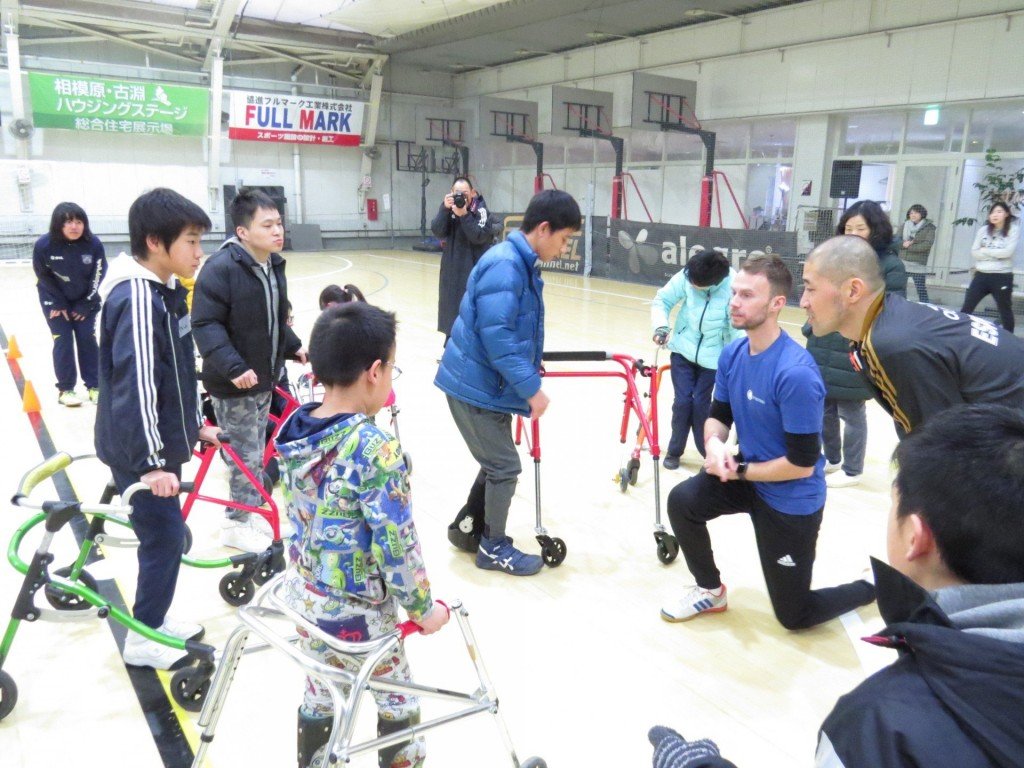
What are the benefits of playing Frame Football?
– Supports physiotherapy and exercise through sport
– Improve aerobic capacity, cardiovascular health, lower body fat, improving muscles tone, increasing bone strength, improving body coordination by participating in regular physical activity
– Participation in a team sport with players with similar abilities has positive mental effects on the players and results in making new friends, sharing more ideas, personal growth, and finding new opportunities to be seen
– Learn team and individual Frame Football skills, which push the player to have more interactions with teammates and share more and more with them
– Focus on Ability, not a disability! Increasing self-confidence and dependency, reducing anxiety and stress, increasing the cognitive brain functions.
Suppose you would like to initiate and develop Frame Football in your country. In that case, you could contact the IFCPF or CPISRA to receive more information and support to make more opportunities for young players with physical disabilities.

